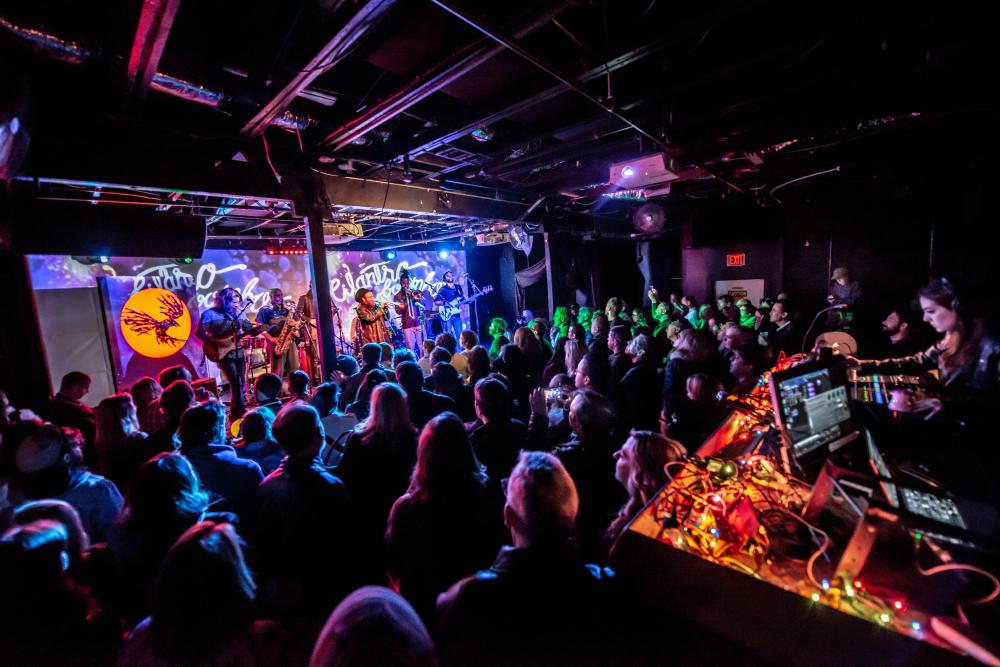What Does Dance Fridays Mean?
Wiki Article
The 2-Minute Rule for Dance Fridays
Table of ContentsIndicators on Dance Fridays You Need To KnowLittle Known Facts About Dance Fridays.Get This Report on Dance FridaysDance Fridays for Dummies
The term "salsa" was coined by Johnny Pacheco in the 1960s in New york city, as an umbrella term for Cuban dance music being played in the city at the time. Salsa as a dance emerged not long after, being a mix of mambo (which was preferred in New York in the 1950s) in addition to Latin dances such as Kid and Rumba in addition to American dances such as swing and tap.
The basic Salsa dance rhythm contains taking 3 actions for every single 4 beats of music. Salsa dancers can likewise disintegrate to dance solo, called "lusters". Both primary designs of salsa are direct and circular. In direct salsa, professional dancers stay in their "slot", changing areas from one side of the port to the other, similar to West Coastline Swing New Yorkstyle salsa and LA-style salsa are both danced in this manner.

The Of Dance Fridays
Salsa dancing is a global dancing that can be located in most city cities worldwide - https://www.domestika.org/en/salsacrazysf1. Celebrations are held each year, commonly called a Salsa Congress, in various host cities aimed to draw in a variety of salsa dancers from various other cities and nations - salsa crazy. The occasions bring professional dancers with each other to share their passion for the dancing, construct community, and share steps and suggestionsVideo clip demonstrating salsa dancing fundamentals Over the years, numerous various styles of salsa dancing have developed around the world. Including various other dancing designing methods right into salsa dancing has likewise ended up being typical, with dancers of one design incorporating designs and motions of others to develop new blends of dancing designs.
Check Out Your URL

One of the most influential numbers in New york city design salsa is Eddie Torres - salsa crazy (called "the Mambo King"), that is attributed with helping to define the on 2 salsa timing (based upon mambo) and aiding to popularize it by instructing it in dance workshops in New york city and through early training tapes
The Single Strategy To Use For Dance Fridays
LA style salsa is danced in a line or "slot" with professional dancers trading settings throughout the dance, unlike Cuban salsa which is danced in an extra round fashion.In this pattern, the leader steps onward on 1, steps to the exactly on 2-3 while transforming 90 degrees counter-clockwise (encountering to the left), leaving the port open. https://slides.com/salsacrazysf1. The follower then tips easy on 5-6 and switches on 78, while the leader makes one more 90 degrees counter-clockwise and a little onward, returning right into the port
The "Vazquez Brothers" (Luis Vazquez, Francisco Vazquez, and Johnny Vazquez) are attributed for the early development and development of LA Style. Luiz Vazquez was the founder of Los Angeles's very first salsa dance team, Salsa Brava.
Later professional dancers such as Alex Da Silva, Christian Oviedo, and Liz Lira are likewise attributed with developing the LA design of dance as we understand it today. [] In Cuba, a popular dance referred to as Casino site was marketed as Cuban-style salsa or Salsa Cubana abroad to identify it from various other salsa styles when the name was promoted globally in the 1970s.
Dance Fridays for Beginners
The name Gambling establishment is derived from the Spanish term for the dancing halls, "Online casinos Deportivos" where much social dancing was done among the better-off, white Cubans throughout the mid-20th century and onward. Historically, Gambling enterprise traces its beginning as a companion dance from Cuban Boy, Cha Cha Cha, Danzn and Guaracha.This implies that no action is handled the initial and 5th beats in each clave pattern and the 4th and 8th beat are emphasized. By doing this, rather than complying with a beat, the professional dancers themselves contribute in their motion, to the polyrhythmic pattern of the songs. At the very same time, it is frequently danced "a tiempo", although both "on3" (initially) and "on1" (nowadays).
Report this wiki page